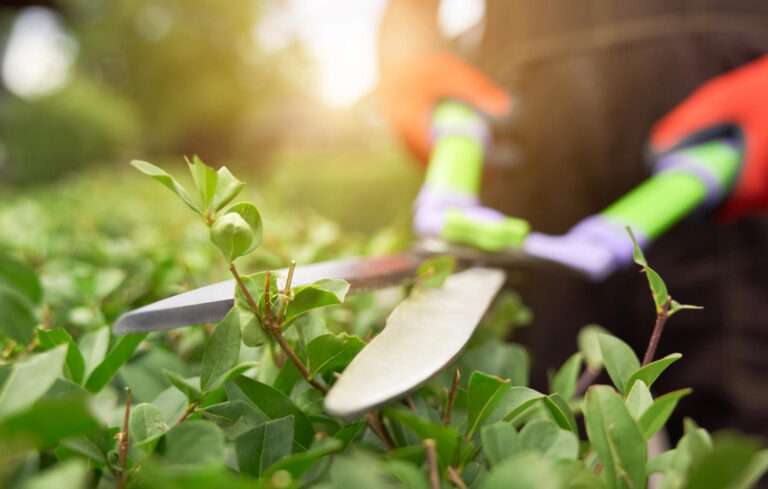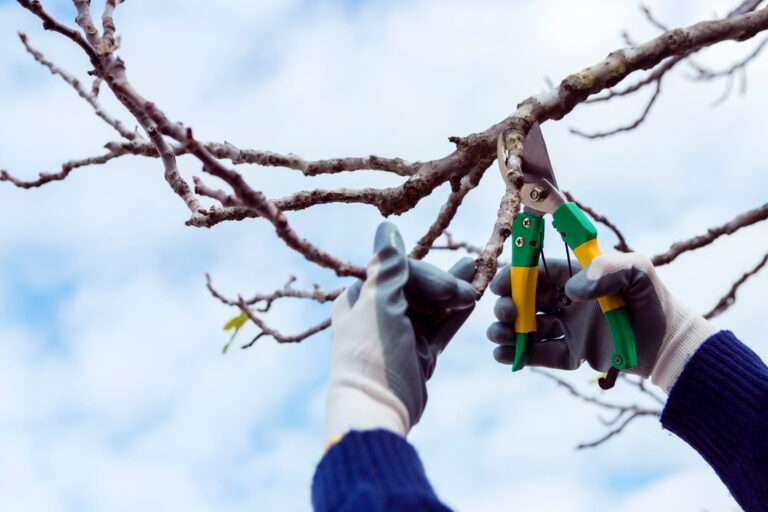The Environmental Benefits of Smart Mowing Practices: How Sustainable Turf Care Makes a Real Difference
It’s easy to overlook mowing as a source of environmental impact. After all, it’s just grass cutting, isn’t it? But when you scale that up – across thousands of sports fields, parks, schools, and green spaces – it adds up. Fuel use, emissions, soil compaction, noise pollution, even the disposal of clippings – all these things quietly shape our environmental footprint.
Grounds maintenance has come a long way. What was once a purely cosmetic task is now a carefully managed operation balancing performance, presentation, and sustainability. And smart mowing practices sit right at the heart of it.
Modern turf care is about working with nature, not against it – using smarter machinery, lighter methods, and timing that supports both the surface and the ecosystem beneath it.
Why “Smart” Mowing Matters
Mowing is the single most frequent intervention a turf surface experiences. A football pitch might be cut over 100 times a year. That’s 100 opportunities to do environmental harm – or good.
The difference lies in how it’s done. Fuel-efficient machinery, reduced passes, optimised timing, and good operator technique can dramatically reduce carbon output and resource use. It’s not glamorous work, but it’s measurable.
In the UK, local authorities are under pressure to cut emissions while maintaining green spaces to a high standard. That means every litre of fuel, every soil track mark, every trip to the compost heap is scrutinised. Smart mowing isn’t just an eco-friendly ideal – it’s becoming a practical necessity.
Fuel Efficiency and Cleaner Machinery
Fuel is the obvious starting point. Traditional diesel mowers are still common, but new generations of hybrid and electric models are steadily changing the game. They’re quieter, cheaper to run, and crucially, emit far fewer pollutants.
Even within combustion engines, there are efficiencies to be gained. Simple changes – like correct tyre pressure, sharp blades, and regular servicing – can cut fuel use by 10–15%. Over a season, that’s a serious saving in both cost and emissions.
| Mower Type | Typical Fuel Use (L/hr) | CO₂ Emissions (kg/hr) | Notes |
|---|---|---|---|
| Diesel ride-on | 3–4 | 8–10 | Standard for large sports fields |
| Hybrid | 2 | 5 | Uses regenerative drive and battery assist |
| Battery-electric | 0 | 0 (direct) | Ideal for smaller or urban sites |
| Manual/Push reel | 0 | 0 | Best for fine turf or small plots |
You’ll notice electric machines are still limited by battery range, but that’s improving fast. And when the electricity is sourced from renewables, the carbon footprint almost disappears.
Noise reduction is another plus. Quieter machines allow mowing at more flexible times, reducing disruption to local communities and wildlife. Small detail, big impact.
Reducing Soil Compaction – The Hidden Sustainability Factor
One of the least discussed – yet most damaging – effects of mowing is soil compaction. Every pass of a heavy mower presses the soil, squeezing out air pockets vital for root growth and microbial life. Compacted soil struggles to absorb rainwater, increasing runoff and erosion risk. It also limits oxygen to roots, weakening turf resilience.
Smart mowing addresses this with lighter equipment, controlled traffic routes, and varied direction. Instead of mowing in the same pattern week after week, operators alternate paths to spread the load.
In my experience, just changing mowing direction every other cut can reduce compaction bands by half. You can feel it underfoot – firmer but not hard, resilient rather than spongy. Healthy soil structure supports not just grass growth but biodiversity too – worms, insects, and microbes all thrive when the ground can breathe.
Some sites even use turf tyres with wider footprints or low-pressure systems to further protect soil. A simple change that adds years of life to a sports surface.
Sustainable Maintenance Regimes – Timing, Frequency, and Recovery
There’s a temptation to mow frequently for appearance’s sake. But grass doesn’t always thank you for it. Every cut interrupts photosynthesis and forces the plant to draw energy from its roots to regrow. Cut too often and too short, and you’re draining its reserves unnecessarily.
That’s where timing comes in. Smart mowing aligns cuts with growth rates – not calendars. In spring, growth is fast and frequent cuts make sense. In summer heat, less so. Autumn brings slower regrowth and a focus on strengthening roots for winter.
| Season | Growth Rate | Recommended Frequency | Average Height (mm) |
|---|---|---|---|
| Spring | High | 2–3 times/week | 20–30 |
| Summer | Moderate | 1–2 times/week | 25–35 |
| Autumn | Slower | Weekly | 30–40 |
| Winter | Minimal | As required | 35–50 |
This flexible schedule saves fuel, reduces stress on the turf, and limits unnecessary mechanical wear.
And there’s a wider sustainability picture too – fewer cuts mean fewer emissions, less noise, less compaction, and longer machinery life.
It’s a good reminder that sustainability isn’t always about new technology. Sometimes it’s just about restraint.
Grasscycling and Nutrient Recycling
Here’s a practice that’s quietly gaining popularity – leaving clippings on the surface. It’s known as “grasscycling”, and it’s a remarkably effective way to return nutrients to the soil.
Instead of collecting and transporting clippings (a process that uses time, fuel, and plastic waste bags), fine cuttings decompose naturally, returning nitrogen and organic matter to the turf. It improves soil structure, reduces fertiliser use, and keeps green waste out of landfill.
The key is in the cut. You need sharp blades and dry conditions so clippings are small and evenly distributed. Otherwise, they clump, block sunlight, and create disease risk. But done properly, it’s one of the simplest sustainability wins there is.
Smarter Route Planning
Think of mowing like logistics. Every extra pass, overlap, or unnecessary turn costs fuel and time. GPS-guided mowers are now common on large sites – mapping the most efficient route, minimising overlap, and ensuring even coverage.
Even without GPS, operators can plan smarter. Start from the outside, reduce turning arcs, and avoid double-passing corners. On a big sports field, small route optimisations can save hundreds of metres of unnecessary travel per session.
It’s the same principle airlines use when planning fuel-efficient flight paths. Precision equals savings.
Biodiversity and the Balance of Short vs Long Grass
Smart mowing doesn’t always mean mowing more. In some cases, it means mowing less. Allowing certain areas to grow out – edges, banks, or unused field sections – supports pollinators and ground-dwelling wildlife.
These buffer zones also help with carbon sequestration and water retention. You might lose a bit of visual neatness, but you gain a lot in ecological value. Many councils are already experimenting with this balance – combining manicured sports turf with longer meadow zones.
It’s about intentional variety rather than uniform tidiness. In nature, diversity is resilience.
Waste Reduction and Equipment Longevity
Every litre of oil, every broken blade, every wasted bearing adds up. Extending equipment life through good maintenance is one of the least glamorous but most sustainable practices there is.
Regular sharpening, cleaning, and checking tyre pressure not only keep machines efficient – they prevent premature replacement. A well-serviced mower can last twice as long, cutting manufacturing emissions in half.
Some grounds teams also use bio-based hydraulic oils and biodegradable greases. These might seem small gestures, but when your machinery operates in public green spaces, any leak or spill directly affects soil and groundwater.
A Word on People and Training
All the clever equipment in the world means nothing if operators aren’t trained properly. Sustainable mowing depends on human judgement – recognising when grass needs a cut, when it needs a rest, and how to avoid unnecessary damage.
In my experience, investing in skilled operators delivers more environmental benefit than any single piece of kit. They notice patterns, predict problems, and adapt techniques before issues escalate. Training is sustainability in human form.
The Wider Picture – Mowing as Part of Climate-Resilient Management
As climate patterns shift, grounds management has to adapt. Drier summers, heavier rainfall, unpredictable growth periods – all affect mowing cycles. Smart mowing practices give flexibility.
Lighter machinery means less rutting in wet months. Smarter fuel systems mean operators can work longer without refuelling. And by combining mowing with aeration and soil health monitoring, you can create turf that withstands both drought and flood conditions better than before.
This is the direction professional groundskeeping is heading – sustainable, adaptive, data-informed. But it still starts with something as simple as when and how you cut the grass.
Smart Mowing and Public Perception
Sustainability isn’t just an internal policy anymore – it’s visible. Residents, players, and visitors notice when grounds teams are doing things differently. Electric mowers hum instead of roar. Clippings are recycled. Wildflower margins buzz with bees.
It builds trust. It shows thought and responsibility. And in a sector often judged on appearances, these small choices send a strong message – that presentation and sustainability can go hand in hand.
Bringing It All Together
Smart mowing is about seeing the bigger picture in every small decision. Fuel-efficient machinery reduces emissions. Light, careful operation protects the soil. Grasscycling feeds the turf naturally. And timing cuts to the plant’s rhythm keeps everything in balance.
The best part? These aren’t complex changes. They’re practical, measurable steps that any grounds team can take. Sustainability in this context isn’t theoretical – it’s tangible.
And if you’re managing sports pitches, municipal parks, or any large turf area, you’ll know that consistent, sustainable mowing is the foundation of long-term performance. For a closer look at structured mowing practices that support turf health and reduce environmental impact, see our page on sports field mowing.
Because in the end, smart mowing isn’t about cutting grass – it’s about cutting waste.
Killingley Insights is the editorial voice of NT Killingley Ltd, drawing on decades of experience in landscaping, environmental enhancements, and civil engineering projects across the UK.








